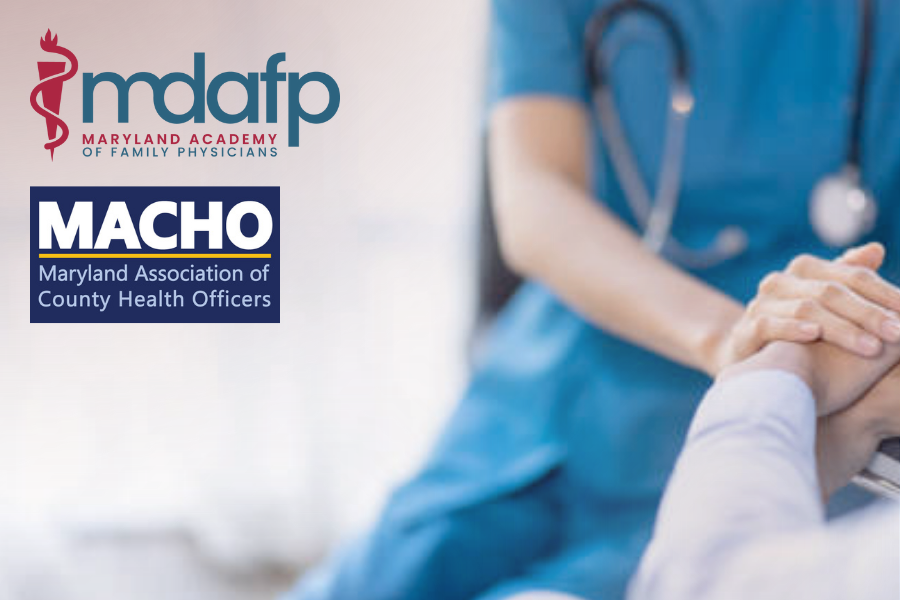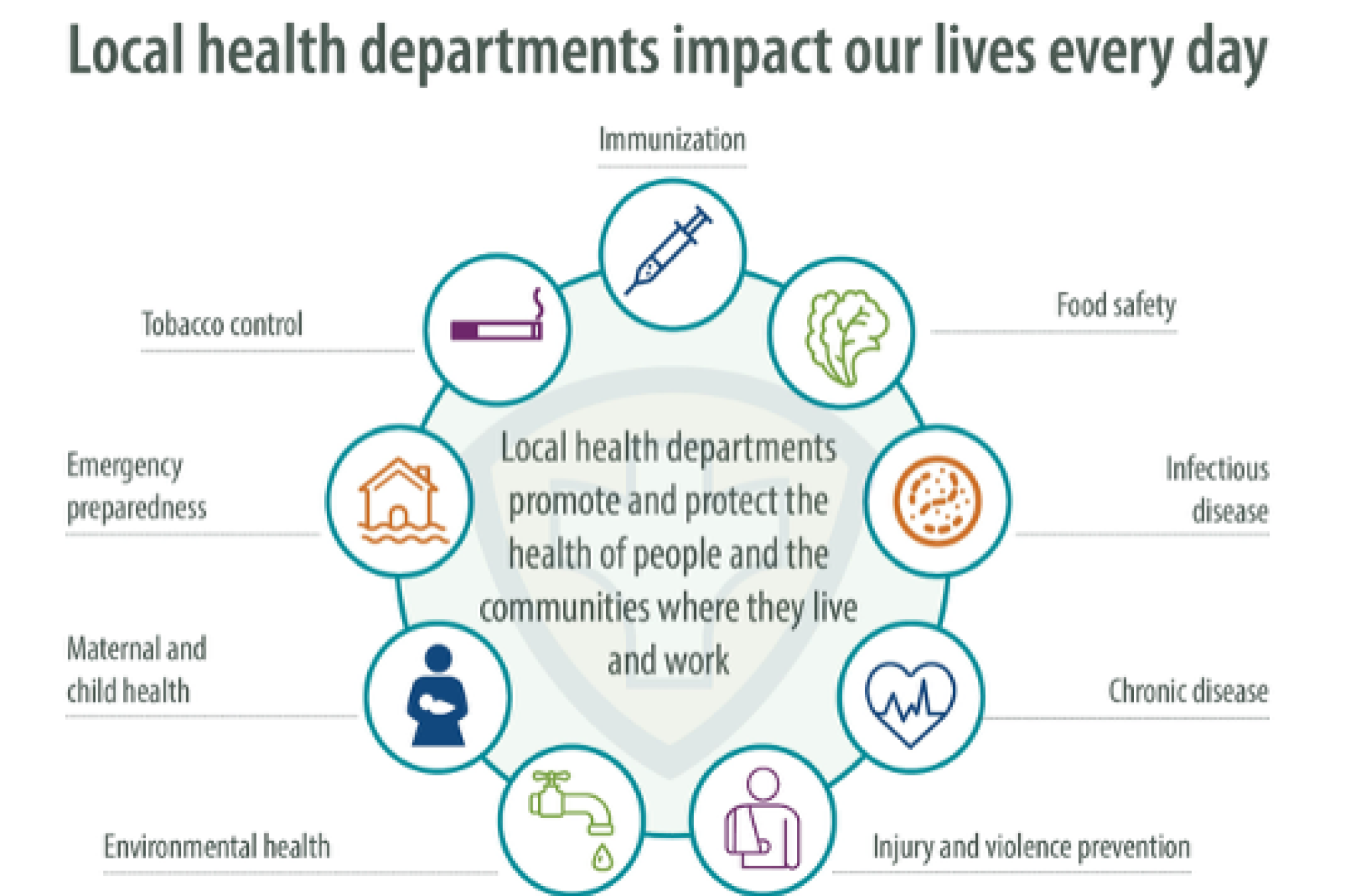


What is Public health? Public health is what we, as a society, do collectively to assure the conditions in which people can be healthy. (The Future of Public Health, IOM, 1988). Health isn’t just about the choices we make as individuals, it’s also about the options we have available to us. Public health can have a positive impact on those options.
Local public health is designed to meet the specialized needs of the community it serves. As the saying goes, “If you’ve seen one Local Health Department, you’ve seen…… one Local Health Department.” Though guided by federal and state policies and priorities, Local Health Departments (LHDs) have the knowledge, data, connections, and expertise to prioritize and address the unique needs of their communities.
What do Local Health Departments do?
Public health traditionally addressed community health and hygiene, making enormous strides in lengthening the lifespan and improving quality of life through initiatives including sanitation, vaccination, tobacco cessation, access to reproductive and other health care, and many more.
The Public Health 3.0 framework developed in 2016 expands on this progress, adding the social determinants of health—the conditions in the social, physical, and economic environment in which people are born, live, work, and age. These determinants must be addressed in order to achieve health equity, defined simply in the MAPP 2.0 framework as “everyone ha(ving) a fair and just opportunity to achieve their highest level of health.” This means evaluating and working on affordable housing, transportation, exposure to environmental toxins, food insecurity, violence, bias and discrimination, trauma, and many other factors that directly and indirectly impact health and well-being.
Local Health Departments cannot do this work alone. The expanded vision of Public Health 3.0 requires collaboration across both health and non-health sectors, including community member engagement. In their Community Health Strategist role, Local Health Departments bring partners together, provide data and information, and facilitate planning and projects that will positively impact their communities. Family physicians are key partners in improving the health of both individuals and communities in the areas they serve.
In Maryland, Local Health Departments accomplish much of this collaborative work through their Local Health Improvement Coalitions. There are 20 in Maryland, one in most jurisdictions and a Mid-Shore Coalition representing five counties. Local Health Improvement Coalitions, known as LHICs, coordinate community work groups that identify and address local health priorities, documented in Community or Local Health Improvement Plans. LHIC meetings and their work groups are open to all, and provider participation would be welcome and provide an often-missing perspective.
Health Departments also support or provide required Community Health Needs Assessments for hospital systems and local planning.
In addition to playing a leading role in community health planning and improvement, Local Health Departments offer a wide variety of services in their communities:
ALL |
NEARLY ALL |
SOME |
Community Health Strategist |
Family Planning Clinics |
Early Care Programs |
Immunizations |
Environmental Health (MDE): water and air quality, well and septic, development review |
Dental Clinics |
Communicable Disease Surveillance |
Oral Health Outreach |
Residential Services |
Adult Evaluation Review Services (AERS for Medicaid enrollees) |
Behavioral Health Care System Oversight (LBHA) |
Behavioral Health Treatment |
Cancer Screening Programs |
Non-Emergency Medical Transportation |
Home Health |
Tobacco Control and Prevention (including cessation services) |
Birth and Death Certificates |
School Based Health Clinics and/or School Health Room Services |
Emergency Preparedness |
Violence and Injury Prevention |
Laboratory Services |
Drug and Alcohol Prevention |
Fatality Reviews – infant, child, overdose |
Harm Reduction Programs (syringe services, naloxone distribution, etc.) |
Rabies Control |
Medicaid Enrollment |
Child Safety Seats - installation, low cost seats |
Environmental Health (MDH): food safety, rabies, camp and pool inspections |
Chronic Disease Education |
After School Programs |
Women, Infants, and Children Supplemental Nutrition Program (WIC) |
Lead & Asthma Programs |

Public Health 3.0 requires input and effort from many community partners, including providers.
How can you get involved in local public health?
Learn more about what services your LHD offers. Visit the MDAFP Local Health Department page for website links, highlighted programs, and contact information.
Read more News from MDAFP